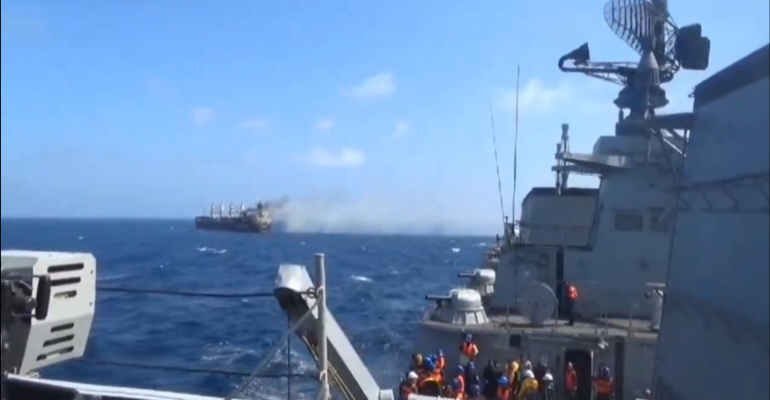Unconfirmed reports of the latest attacks include a missile targeting the 4,944 teu Pinocchio, with US Centcom claiming that the missile detonated near the vessel.
Centcom denied Houthi claims that the vessel had been hit and UKMTO confirmed Centcom’s view that a Singaporean-owned, Liberian-flagged ship was fired upon but “The missiles did not impact the vessel and there were no injuries or damage reported.”
The Liberian-flagged Pinocchio is opearted by SeaLead Shipping who said in a statement all crew members are accounted for and unharmed and that here was no damage to the vessel or cargo. SeaLead said none of its ships operating through the Red Sea/Suez Canal region were owned by US or UK companies, and that none if its vessels have Israeli links or call Israeli ports.
The Pinocchio has continued on its planned voyage.
Perhaps of equally great concern was Centcom’s report that it had intercepted an unmanned underwater vessel and 18 anti-ship missiles fired by the Houthi Movement. These continued attacks have forced commercial ships into diverting around the African Cape, adding around 9,000nm to a vessel’s journey to Europe from Asia and nearly tripling the payments of the EU ETS, introduced in January this year, according to emissions tracking platform OceanScore.
According to Clarksons’ statistics the number of container ship transits via the Red Sea to Europe have fallen by 91% from early December, with some 620 vessels diverting via the Cape, with bunker and crude tanker transits falling by 37% and 31%, respectively.
The Hamburg-based platform estimates that diverted vessels have tripled fuel consumption and added an “approximate 25% increase in sailing speed from 16 to 20 knots,” calculated via AIS tracking of mainly container vessels.
“This translates to a near-threefold increase in EUA [EU Allowances] costs from €98,000 to €285,000 per voyage this year, based on the current carbon price of around €55 per tonne of CO2, or a hike of €18/teu,” according to OceanScore.
“It goes without saying that changes in sailing speeds, different vessel sizes, utilizations and the overall energy efficiency of the vessel used will all have a significant impact on the above analysis – but the general trend will be the same,” said OceanScore co-MD Albrecht Grell.
Grell added that, if the carbon price returned to around €100, reached only a year ago, costs would nearly double. “With complete phase in of the EU ETS to 100% of emissions, we would see another 250% increase that would bring the cost mark-up per box to around €80.”
Although, as Grell points out, €80 remains only a small proportion of cargo costs carriers must prepare for higher EU ETS bills in the near future.
“The threat level to Red Sea shipping remains high and it is uncertain how long this situation will persist for ocean freight given the Houthi attacks continue unabated. Shipping companies must therefore prepare and take account of higher emissions liabilities for the foreseeable future,” said Grell.
Copyright © 2024. All rights reserved. Seatrade, a trading name of Informa Markets (UK) Limited.
Add Seatrade Maritime News to your Google News feed.  |

